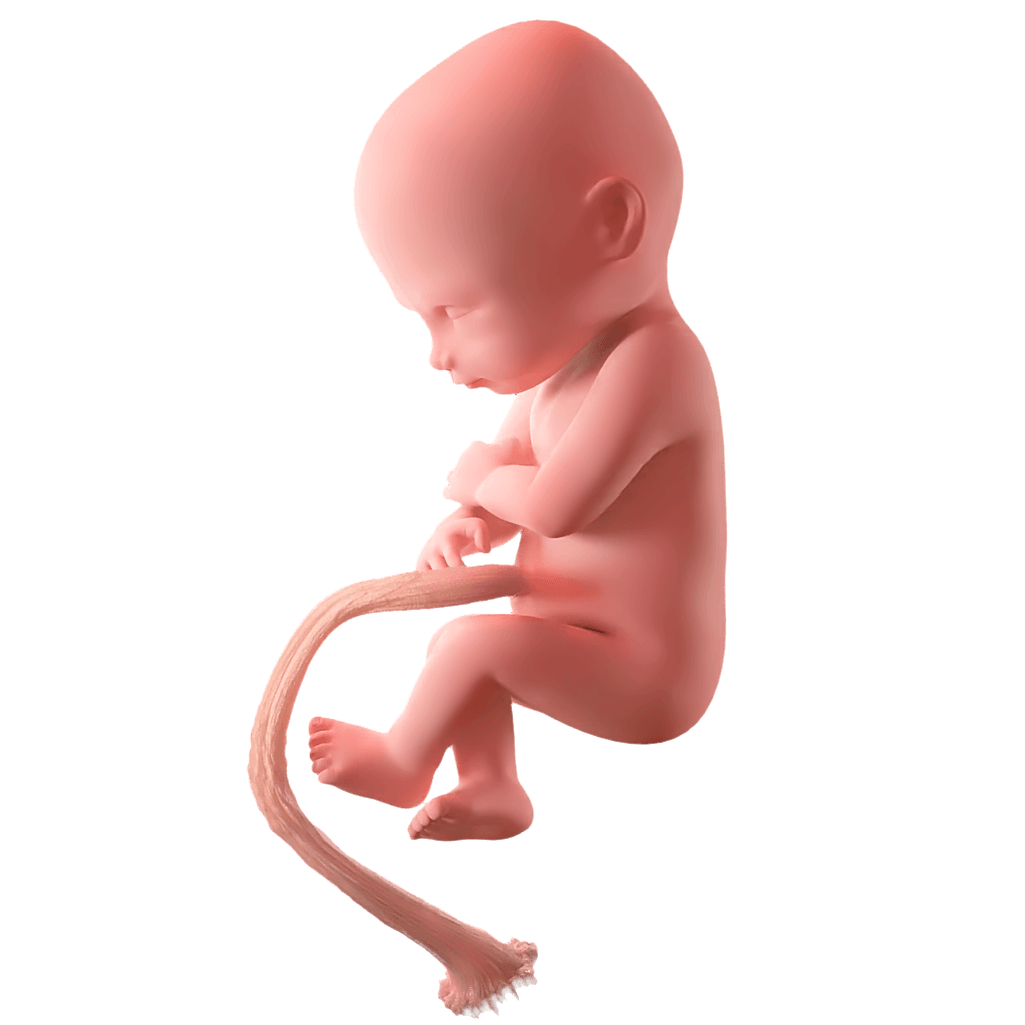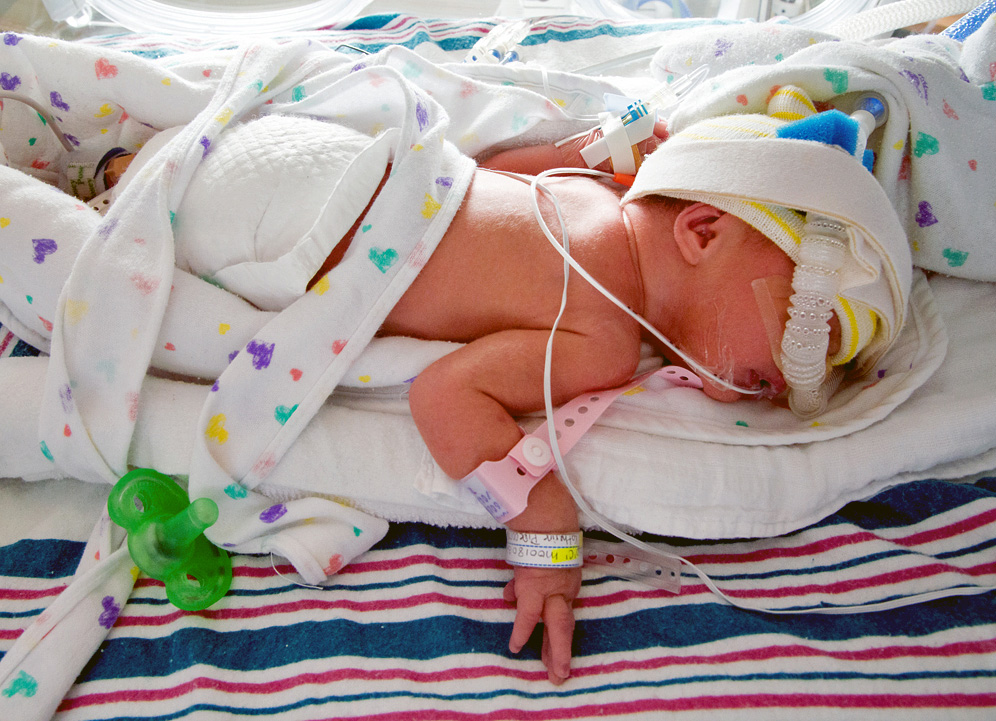By 6 months, the eyes have developed light-sensitive receptors called rods and cones.14 Rods let the eyes detect very small amounts of light. By contrast, cones mostly detect light in the center of a person’s vision and produce sharp, colorful images. Adults have 100 million rods and 7 million cones in each eye.15 Rods and cones are formed all over the retina, but in adults, rods are mostly found in the periphery and cones are found in the center of the retina, called the fovea. Interestingly, cells stop dividing in the fovea around 16 weeks gestation, and cells stop dividing in the periphery around 31 weeks.16 Cones move towards the fovea and rods move out of the fovea throughout pregnancy and for many months after birth.17 In fact, cones continue to mature until at least 4 years old.18
The visual system is functional by month 6. Premature babies born at 26 weeks show a brain response to light,19 as does the fetus in utero at 28 weeks.20 After birth, the pupil gets smaller and bigger to let in the correct amount of light to the eye. This change in pupil size has first been observed in the fetus at 31 weeks,21 and is seen after 33 weeks in preterm infants.22
Although premature infants get extra visual stimulation compared to babies born near their due date, this extra experience does not help them see better. In fact, preterm infants have slower visual development, so that by 7 months old, their acuity is poorer than kids conceived at the same time.23 Also, premature babies can cry with tears, but tend to have less tears than babies born near their due date.24











